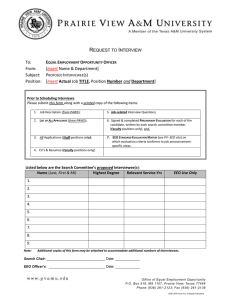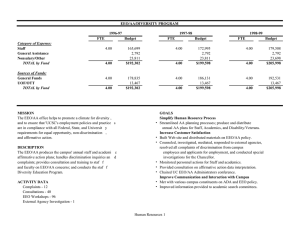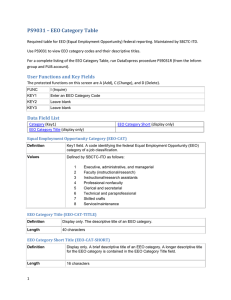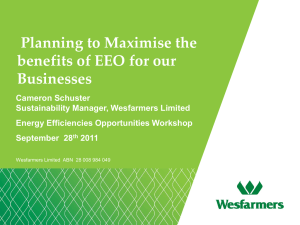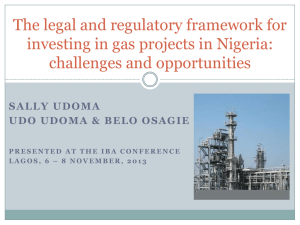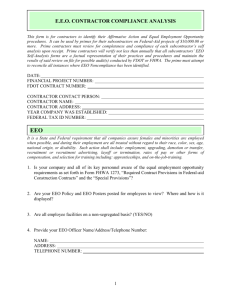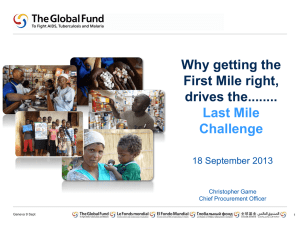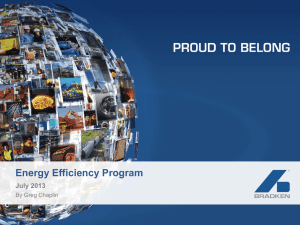PPT 3.1MB - Energy Efficiency Opportunities
advertisement
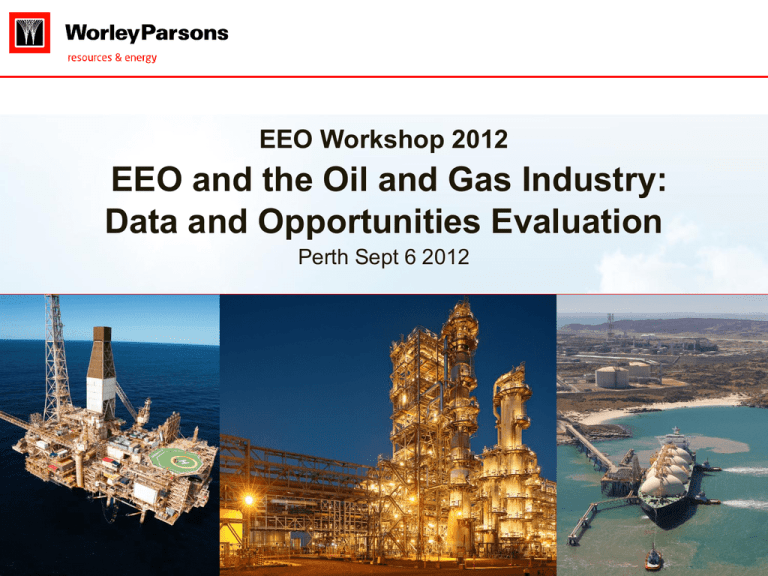
EEO Workshop 2012 EEO and the Oil and Gas Industry: Data and Opportunities Evaluation Perth Sept 6 2012 1 Overview Industry context Sources of energy use Issues EEO 2 in data management examples Industry context Business drivers REGULATION/ PLANNING APPROVAL/ REPORTING COSTS/FINANCIAL RISKS RESOURCE EFFICIENCY 3 INVESTORS REPUTATION INDUSTRY/ PROJECTS INNOVATION/ COMPETITIVE ADVANTAGE NEW TECHNOLOGY ENERGY EFFICIENCY/ GHG PERFORMANCE Industry context Industry features - conventional gas Upstream (offshore) and downstream (onshore) Export (LNG and condensate) and domestic (domgas) Small no. of operational processing plants: most capacity under development Most energy consumption sourced from fuel gas LNG production is energy intensive LNG plants are proprietary designs ….. Focus on efficient hydrocarbon recovery 4 Sources of energy use 1 5 Upstream Sources of energy use 1 Gas turbines Standby diesel Vessels/transport (Flaring/venting) Upstream for exploration, power, upstream processing, compression 6 Sources of energy use 1 7 Downstream Sources of energy use 1 8 Downstream Sources of energy use 1 Gas turbines Standby diesel Ancillary systems (Flaring/venting) Downstream for power, processing, liquefaction (LNG), compression (domgas) 9 1 Issues in data management Energy content of fuel gas Varies with reservoir changes, point in the process and operating mode Integration with process control systems and data Woodside uses Production Accounting System (PAS) Accuracy of metering 10 Typical 5-10% for fuel gas use and production Higher (1-2%) for custody transfer at sales point 1 Issues in data management Estimation of venting and flaring 11 e.g. Engineering estimates, emissions factors or other Examples 1 Upstream EEO From Woodside EEO 2006 -2011 Flare and vent recovery system Reduce stripping gas flow rate Installation of a Complabloc heat exchange Reduced flaring from a LP separator (30,400 GJ pa) Fuel gas return line (190,000 GJ pa) Plus Optimal offshore system configuration at design stage 12 Process, equipment optimisation during operations and maintenance Examples 1 Downstream EEO From Woodside EEO Gas Plant – turn off thermal combustion unit (through upgrades of Acid gas Recovery Units) Karratha Plus Optimal offshore system configuration at design stage Process, equipment optimisation during operations and maintenance Note – May be trade-offs between process and energy efficiency 13 Contact: Tom Clark, Principal Consultant WorleyParsons Sustainability and Carbon Consulting 08 6311 5146 tom.clark@worleyparsons.com 14
